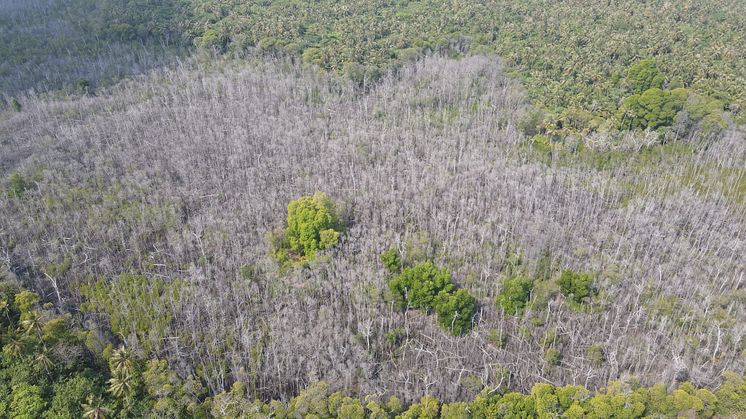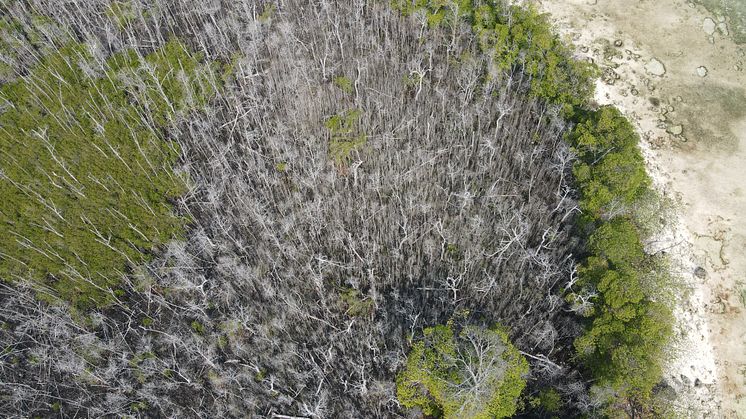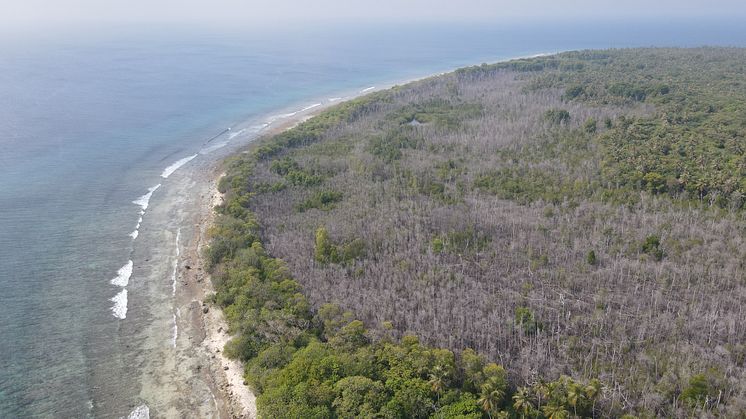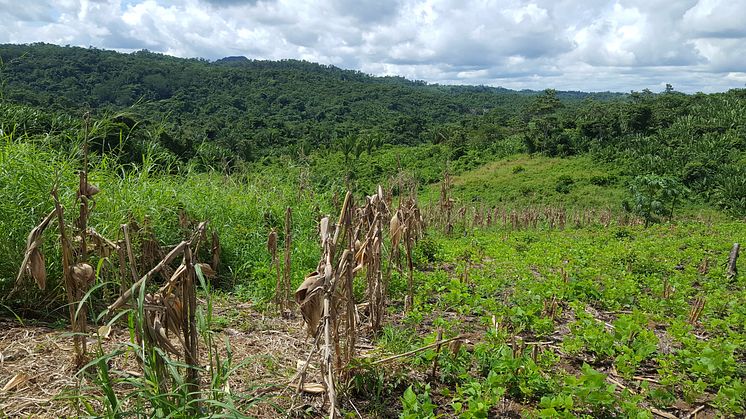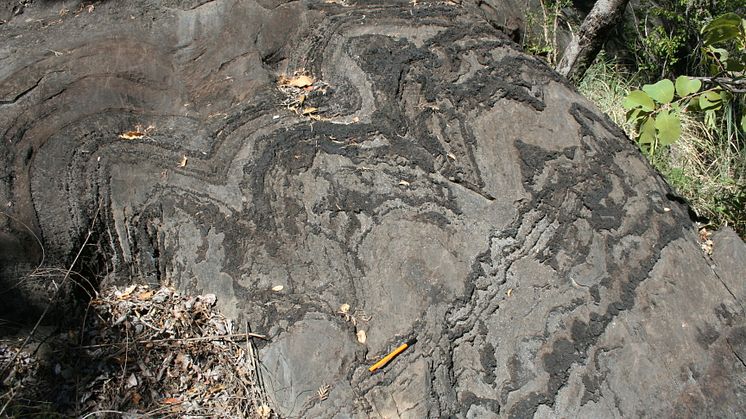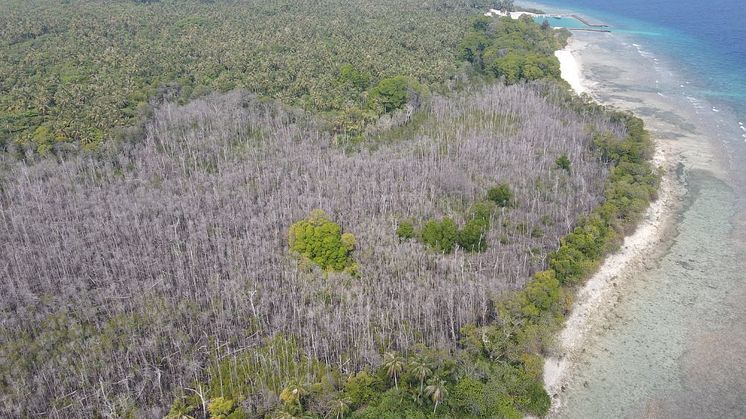
Press release -
“Drowning” mangrove forests in Maldives signal global coastal threat
Researchers have found evidence that mangrove forests – which protect tropical and subtropical coastlines – are drowning in the Maldives.
Their findings, published today (Tuesday 12 November) in Scientific Reports, indicate that rising sea level and a climate phenomenon known as the Indian Ocean Dipole have led to some Maldivian islands losing over half of their mangrove cover since 2020.
The research team, led by Northumbria University, warn that the findings have implications not only for the Maldives, but also for other island nations and coastal ecosystems around the world.
In 2020, more than a quarter of the Maldivian islands containing mangrove forests saw their trees experiencing a gradual deterioration before dying, a condition known as dieback.
Satellite imagery of both inhabited and uninhabited islands revealed the severity of this issue, showing that some islands lost over half of their mangrove cover.
Mangroves play an essential role in protecting coastal regions by acting as natural barriers against storms, erosion and flooding. As biodiversity hotspots they are vital nurseries for marine species such as crabs, prawns and fish making them crucial for food security and livelihoods in many coastal communities. They also provide valuable resources such as construction materials for housing.
A team of researchers, led by Lucy Carruthers and Vasile Ersek in Northumbria University’s Department of Geography and Environmental Sciences, combined evidence from sea level, climate data and remote sensing with field observations of sediment geochemistry and dendrology to investigate the mangrove dieback.
Their analysis of mangrove wood revealed that the dead trees showed greater signs of salinity stress compared to living trees.
This stress indicates that the roots of the trees were struggling to cope with increased salt levels, which was a key factor in their eventual death.
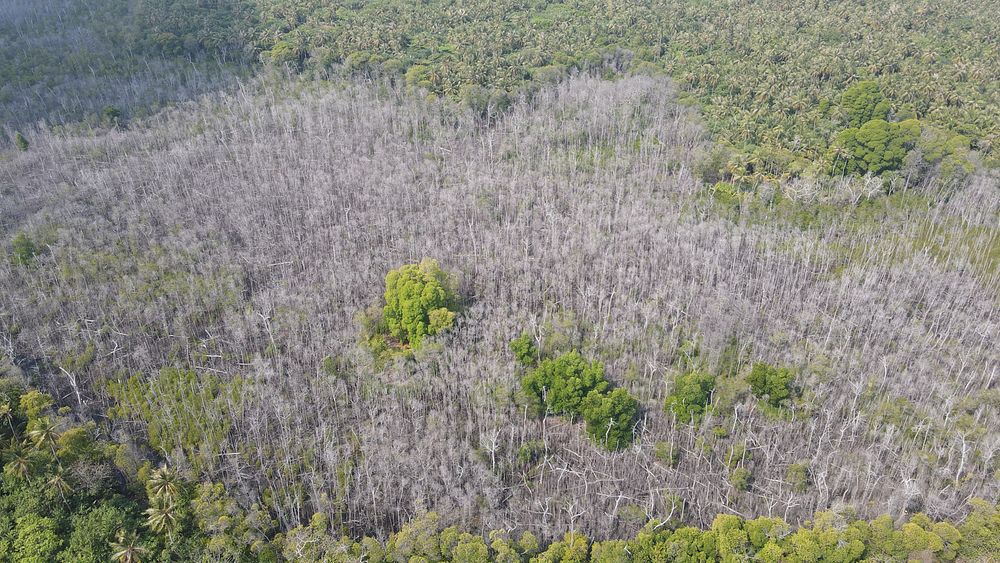
The researchers found that sea levels around the Maldives rose at an accelerated rate of over 30mm per year between 2017 to 2020. Towards the end of this period, an unusually intense climate phenomenon known as the Indian Ocean Dipole occurred. This caused warmer sea surface temperatures and an increase in sea level in the Western Indian Ocean.
Although mangroves naturally build up their own sediment, allowing them to adapt to gradually rising seas, this rate of sea level rise was too fast for the mangroves to keep pace.
As tidal movements are more limited in the basin areas where many mangrove forests grow, the rising sea level meant that seawater effectively flooded the forests. This lack of tidal movement and flooding prevented the mangroves from building the sediment they needed to stay above water. They eventually lost their resilience and died off by drowning.
Dr Vasile Ersek, Associate Professor in Northumbria University’s Department of Geography and Environmental Sciences explained: “Dieback was first observed in the centre of low-lying basin areas before gradually spreading outwards. As these basin areas have something we call limited tidal flushing we saw evidence of the rising sea level inundating the forests with seawater. This prolonged exposure created higher concentrations of salt.
“As the mangroves’ build-up of sediment slowed down due to the pace of the rising sea level, the soil salinity increased beyond what even these salt-tolerant trees could handle. Essentially, the mangroves were drowning.
“The extreme magnitude of dieback seen in the Maldives is a vivid illustration of how climate change may push natural systems past their limits, with cascading consequences for both nature and people.”
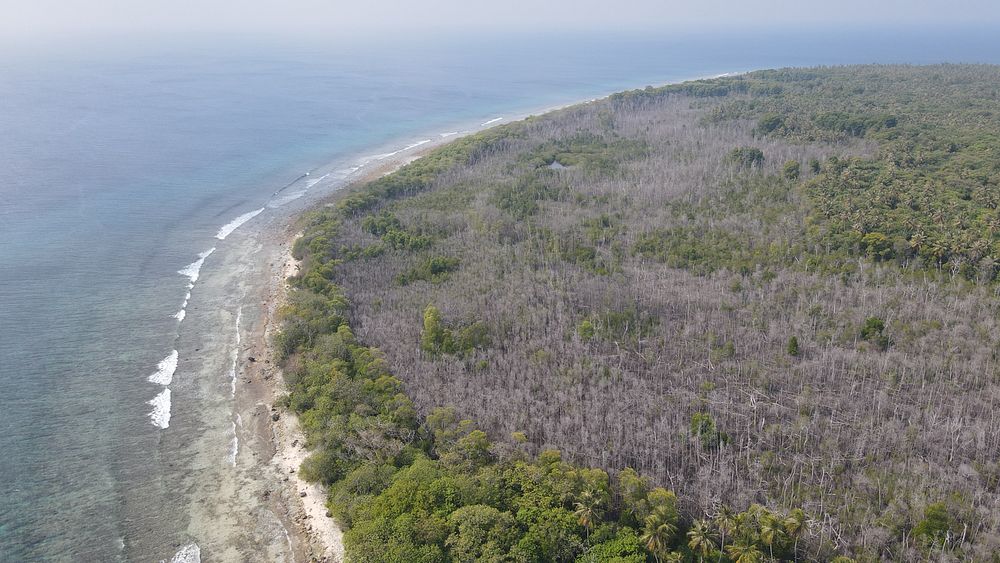
Lucy Carruthers, now a postdoctoral scholar in East Carolina University’s Department of Coastal Studies, led the project whilst working at Northumbria University. She said: “Sea level in the region reached its highest point on tide gauge records when the dieback occurred in 2020. This coincided with an intense positive phase in the Indian Ocean Dipole which can induce climate extremes for countries within the Indian Ocean.
“As our planet continues to warm, we can expect to see the Indian Ocean Dipole occurring more frequently and at higher magnitude, meaning events like this mangrove die-off may become more common.
“These remarkable forests have thrived at the interface of land and sea for many centuries. Whether they can survive the rapid changes of the coming decades will depend largely on our actions in managing the climate crisis today.”
The researchers noted there was published evidence of mangrove die off in other areas of the Indian Ocean around the same period, including the Seychelles and Madagascar.
As mangrove forests store massive amounts of carbon – typically three to five times more carbon per equivalent area than tropical rainforests – the researchers raised concerns that the loss of mangrove forests could also release large amounts of stored carbon, further accelerating climate change.
She added: “Our findings reveal the vulnerability of mangrove ecosystems to rapid sea-level rise and highlight the need for urgent adaptive conservation strategies in small island developing states.
“This may sound like a local problem, but it's a warning for coastal areas worldwide. As climate change and extreme events intensify, some mangrove forests may struggle to keep up with sea level rise. The Maldives, as the world's lowest-lying nation, can therefore potentially be the canary in the coal mine.”
The study, Sea-level rise and extreme Indian Ocean Dipole explain mangrove dieback in the Maldives is now published and available open access in Scientific Reports.
FURTHER INFORMATION:
Visit the Northumbria University Research Portal to find out more about Dr Vasile Ersek’s work.
Sea-level rise and extreme Indian Ocean Dipole explain mangrove dieback in the Maldives by Lucy Carruthers, Vasile Ersek et al was published in Scientific Reports on 12 November 2024. DOI: 10.1038/s41598-024-73776-z
Topics
Categories
UNIVERSITY OF THE YEAR 2022 (Times Higher Education Awards)
Northumbria is a research-intensive university that unlocks potential for all, changing lives regionally, nationally and internationally.
Two thirds of Northumbria's undergraduate students come from the North East region and go into employment in the region when they graduate, demonstrating Northumbria's significant contribution to social mobility and levelling up in the North East of England.
Find out more about us at www.northumbria.ac.uk
--- Please contact media.communications@northumbria.ac.uk with any media enquiries or interview requests ---







